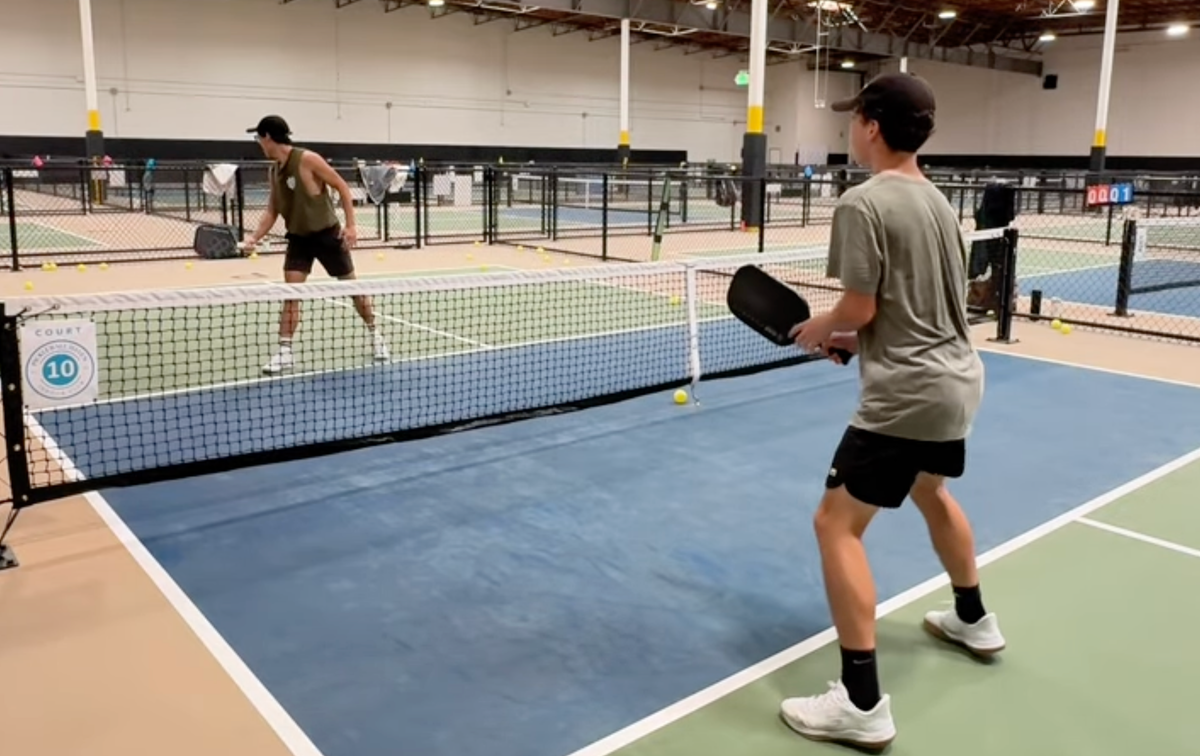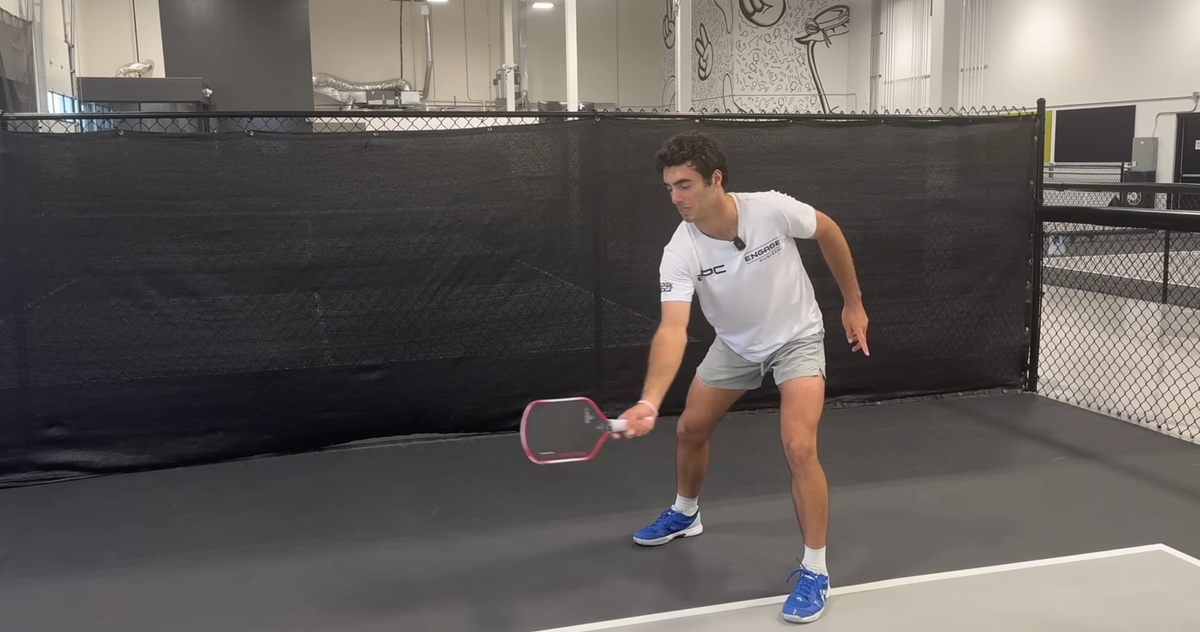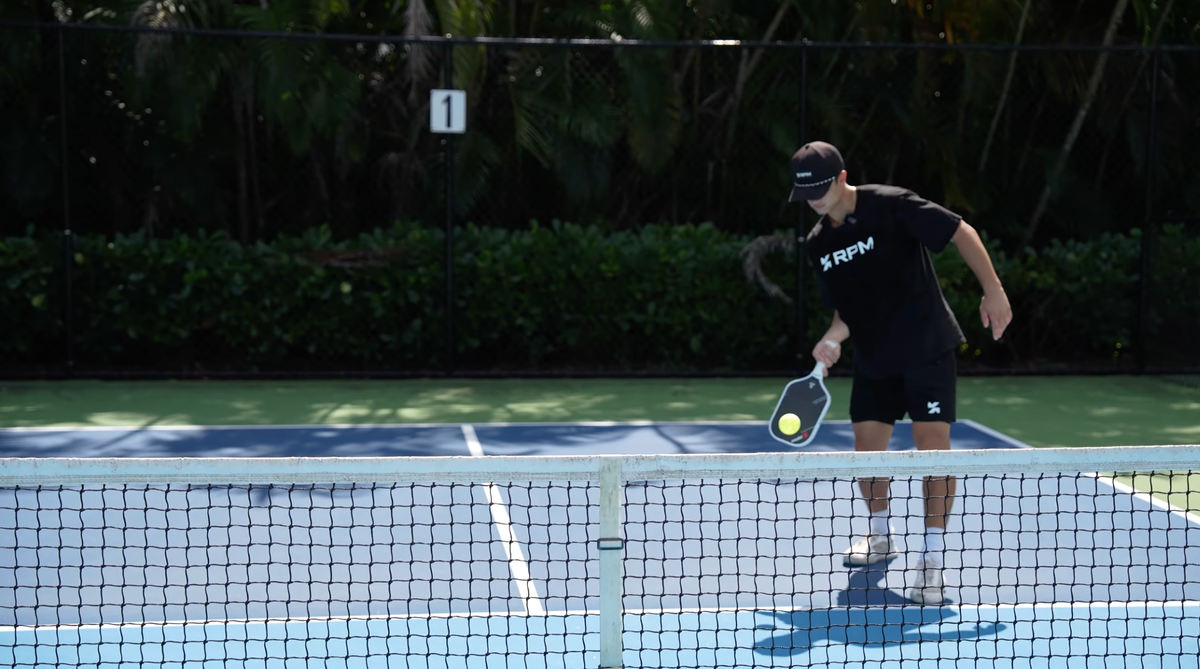
Quick Links
- Mistake #1: Big Swings
- Mistake #2: Hitting Out Balls
- Mistake #3: Short Returns
- Mistake #4: Lack of Communication
- Mistake #5: Poor Reaction to Pop-Ups
- WIN THE PADDLE OF YOUR DREAMS!
- Bonus Tip: Kitchen Misconceptions
- Wrapping Up
Hey guys, it’s Kyle from ThatPickleballGuy. Welcome to Part 2 of our series on common mistakes beginners make in pickleball. If you think you don’t make any of these mistakes or you’re not a beginner, my guess is you’re probably making Mistake #4. Today, I’ve got my friends Jack, JT, and Lili helping me out—and yes, I’m paying them way more than I paid Danny in Part 1. Let’s get into it!
Mistake #1: Big Swings
The Problem
In pickleball, you should be taking shorter swings, not bigger ones. But a lot of times, we’re at the kitchen line, someone hits a hard ball, and we just take this huge swing. Pickleball is so fun, it’s tempting to hit the ball as hard as possible, but those big swings lead to errors.
The Fix
- Volleys: When you’re at the kitchen line, keep your swings tight and compact. Ball comes and I stay in my stance and move my feet to take short, controlled swings. Big, elongated swings? That’s how you make errors.
- Third Shot Drops: Paddle out in front, shorter swing (figure 1). When you take a big swing, you add more force, and the ball pops up, giving your opponents an easy put-away.

- Dinking and Speeding Up: At the kitchen line, short swings are key for both dinks and speeding up the ball. Plus, with short swings, your dink and speed-up look the same, creating deception that can throw off your opponent.
Mistake #2: Hitting Out Balls
The Problem
This one gets me too. I played a tournament last weekend, and there was a ball flying over the mountains behind me—and I still hit it. Most of us have heard “Shoulder High, Let It Fly” or “Eyes High, Let It Fly,” but actually letting out balls go is easier said than done.
The Fix
- Backswings: Watch for a big backswing. If your opponent’s mid-court and takes a huge swing, odds are that ball’s going out.
- Footwork Changes: Pay attention to their footwork. Beginners often get frantic, take a big swing, and hit it as hard as they can. If you see that, let it go.
Next time you play, let the first or second ball go out. If it lands in, that’s fine—it’s just data. Over time, you’ll get better at judging which balls to let go.
Mistake #3: Short Returns
The Problem
Short returns (figure 2 in red) make it easy for your opponents to go on the attack. If you’re playing against a banger—someone who hits everything hard—short returns give them the perfect setup.
The Fix
Aim for deep returns (figure 2 in green), about three feet from the baseline. A deep return gives you time to get to the kitchen and makes it harder for your opponents to attack. When you hit a deep return, your opponent often has to back up, which can lead to mistakes or pop-ups.

Mistake #4: Lack of Communication
The Problem
The biggest problem with communication is thinking it’s happening when it’s not. Most players communicate less with partners they don’t know, but that’s when you need it the most.
The Fix
Communicate on every ball, even when it’s obvious. Use clear calls like “Mine” or “Yours” to build the habit of high-level communication. This removes any confusion and lets you focus on the game.
Example:
- Ball goes to teammate: “Yours.”
- Ball comes to you: “Mine.”
Try communicating on every single ball during your next game. It might feel weird at first, but it’ll improve your teamwork and reduce mistakes.
Mistake #5: Poor Reaction to Pop-Ups
The Problem
When you or your partner pops the ball up, some players freeze or don’t know what to do. That leaves you vulnerable to getting slammed.
The Fix
If the ball pops up, retreat immediately. Give yourself more time and space to react. For example, if my teammate is at the kitchen line and I pop the ball up, he should back up four or five steps, get balanced, and prepare to defend. Then, he can work his way back to the kitchen line once the threat is neutralized.
WIN THE PADDLE OF YOUR DREAMS!
Sign up now for a chance to win any paddle of your choice currently in stock at JustPaddles. Plus, receive expert tips from pro players and exclusive content delivered straight to your inbox.

Bonus Tip: Kitchen Misconceptions
A lot of beginners think you can never step into the kitchen. That’s wrong! You can step in the kitchen as long as you’re not volleying the ball. If the ball bounces, it’s perfectly fine to step in and hit it. The key is knowing when and how to move in and out of the kitchen without breaking the rules.
Wrapping Up
These five mistakes can hold you back, but with awareness and practice, you can fix them. Shorten your swings, let out balls go, aim for deep returns, communicate effectively, and retreat on pop-ups. Got a friend who doesn’t know the rules?
Think you know pickleball inside and out? Challenge yourself with ThatPickleball IQ Test and see if you can score a perfect 10 out of 10!
Related Articles:
Anuncie Aqui / Advertise Here
Sua marca para o mundo Pickleball! / Your brand for the Pickleball world!

 English
English  Spanish
Spanish  Portuguese
Portuguese  German
German  Italian
Italian  Japanese
Japanese  French
French  Polish
Polish  Russian
Russian  Netherlands
Netherlands  Hungarian
Hungarian  Turkish
Turkish  Videos
Videos  Pickleball Portal
Pickleball Portal









 English (US) ·
English (US) ·  Portuguese (BR) ·
Portuguese (BR) ·